Garden Visit: Dunham Massey's Winter Garden
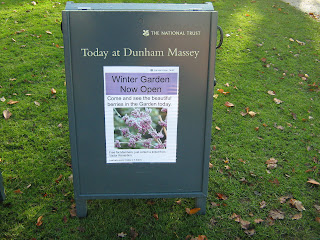 Last Monday, NAH and I took advantage of a relatively good weather forecast to visit Dunham Massey, a vast stately home and estate just outside Manchester. It was a sunny, showery day and our drive around the outside of the estate's boundary walls to its entrance was marked by vast piles of burnt orange beech leaves being whipped up by the winds over the walls and flying across our path. It felt a little like being caught inside a childhood Christmas snowdome, with leaves instead of snow and made an exhilarating start to our day.
Last Monday, NAH and I took advantage of a relatively good weather forecast to visit Dunham Massey, a vast stately home and estate just outside Manchester. It was a sunny, showery day and our drive around the outside of the estate's boundary walls to its entrance was marked by vast piles of burnt orange beech leaves being whipped up by the winds over the walls and flying across our path. It felt a little like being caught inside a childhood Christmas snowdome, with leaves instead of snow and made an exhilarating start to our day.The house itself is closed for the winter, but the parkland and gardens are open year-round. I was particularly keen to visit because a newly planted winter garden had been opened just a fortnight prior to our trip to Cheshire last week and I wanted to be one of the first to see it. It's meant to be the largest winter garden in England and we have only a few gardens open at this time of the year, so I was intrigued in seeing what this actually means. The celebrated plantsman, Roy Lancaster's been involved as advisor to the project, so I was confident the plants chosen would be top notch.
 First impressions on entering the garden are favourable. This is the view looking north from the entrance gate. There's a good variety textures in the planting, using both evergreens and stem colour to provide interest. This view also shows much of the general structure to the garden: there's a network of gently curving paths which gave us a number of different walks around the garden to admire the various themed beds. There's also lots of healthy, mature trees and as soon as I saw these, the choice of a winter garden for this area started to make sense as their reduced canopy at this time of the year would allow the underplanting to start to shine through.
First impressions on entering the garden are favourable. This is the view looking north from the entrance gate. There's a good variety textures in the planting, using both evergreens and stem colour to provide interest. This view also shows much of the general structure to the garden: there's a network of gently curving paths which gave us a number of different walks around the garden to admire the various themed beds. There's also lots of healthy, mature trees and as soon as I saw these, the choice of a winter garden for this area started to make sense as their reduced canopy at this time of the year would allow the underplanting to start to shine through. Further in, the youth of the garden really began to show itself. There's a wide variety of plants, all lovingly numbered by the garden volunteers (as they so proudly told me when we arrived and there's an accompanying catalogue available for £1 if you wish to know what all the plants are) but because the garden's so new, they've not had sufficient time to spread themselves out and for some of the beds to really knit together. This means that the much of the garden looks rather like a selection box of winter interest plants rather than a garden at the moment: it pretty much contains every plant of that ilk you can think of.
Further in, the youth of the garden really began to show itself. There's a wide variety of plants, all lovingly numbered by the garden volunteers (as they so proudly told me when we arrived and there's an accompanying catalogue available for £1 if you wish to know what all the plants are) but because the garden's so new, they've not had sufficient time to spread themselves out and for some of the beds to really knit together. This means that the much of the garden looks rather like a selection box of winter interest plants rather than a garden at the moment: it pretty much contains every plant of that ilk you can think of. However, there was still much to admire. This is the Birch Triangle complete with bench from which to view it. There's plenty of benches dotted around the garden and each one is different: they're a great excuse to stop and listen to the roar of the wind through the trees accompanied by plentiful birdsong. The use of birch might be becoming a bit of a cliche nowadays because a number of conceptual show gardens have used it as their main theme over the past few years, but I still think it's an effective idea. Here, single columns of washed Betula utilis 'Doorenbos' are interplanted with black-stemmed Cornus alba 'Kisselringii'. At the back of the triangle (with a path between) the birches change to a multi-stemmed form and are underplanted with hundreds of marble-leaved Cyclamen. There are thousands of snowdrops planted, ready to burst forth in January. This is an area which I think will go from strength to strength.
However, there was still much to admire. This is the Birch Triangle complete with bench from which to view it. There's plenty of benches dotted around the garden and each one is different: they're a great excuse to stop and listen to the roar of the wind through the trees accompanied by plentiful birdsong. The use of birch might be becoming a bit of a cliche nowadays because a number of conceptual show gardens have used it as their main theme over the past few years, but I still think it's an effective idea. Here, single columns of washed Betula utilis 'Doorenbos' are interplanted with black-stemmed Cornus alba 'Kisselringii'. At the back of the triangle (with a path between) the birches change to a multi-stemmed form and are underplanted with hundreds of marble-leaved Cyclamen. There are thousands of snowdrops planted, ready to burst forth in January. This is an area which I think will go from strength to strength. An area still providing an injection colour was the Hydrangea Walk. The flowers may have been on the wane, but their skeletons were adding a faded beauty to the garden - particularly Hydrangea 'Annabelle' - plus this unamed cultivar was still going strong:
An area still providing an injection colour was the Hydrangea Walk. The flowers may have been on the wane, but their skeletons were adding a faded beauty to the garden - particularly Hydrangea 'Annabelle' - plus this unamed cultivar was still going strong:
 Much of the Bog Garden had been cut back for the winter, especially the skunk cabbage (Lysichiton americanus). For once the presence of duckweed in the small canal could be viewed in a positive light! In the distance, you can see a new bridge which takes you through to the other areas, which aren't shown in the guide as being part of the winter garden. However, there was much to see here too and I'll take you around them another time.
Much of the Bog Garden had been cut back for the winter, especially the skunk cabbage (Lysichiton americanus). For once the presence of duckweed in the small canal could be viewed in a positive light! In the distance, you can see a new bridge which takes you through to the other areas, which aren't shown in the guide as being part of the winter garden. However, there was much to see here too and I'll take you around them another time. I liked how the addition of thousands of Acer leaves to this bed provided contrast and also echoed the red berries on the holly and other nearby shrubs.
I liked how the addition of thousands of Acer leaves to this bed provided contrast and also echoed the red berries on the holly and other nearby shrubs. The Acers also have a bed to themselves and this one was still adding its fire to this part of the garden. There's also plenty of the snake bark maple (Acer davidii) to add contrast and texture once they've matured a little more and I found some multi-stemmed Prunus serrula doing that job right now. This area also hosts the Scented Walk, where shrubs such as Daphne, Mahonia and Witch Hazels (Hamamelis) will play their part. Sadly I was there at the wrong time of the year to check out this particular feature.
The Acers also have a bed to themselves and this one was still adding its fire to this part of the garden. There's also plenty of the snake bark maple (Acer davidii) to add contrast and texture once they've matured a little more and I found some multi-stemmed Prunus serrula doing that job right now. This area also hosts the Scented Walk, where shrubs such as Daphne, Mahonia and Witch Hazels (Hamamelis) will play their part. Sadly I was there at the wrong time of the year to check out this particular feature. However, there's plenty of ground-cover interest. I'd forgotten how good the pictured Arum italicum is at this time of the year and there were plenty of Hellebores already in flower as well as the last remains of the Cyclamen and various Colchicum. In the spring they'll be joined by thousands of bulbs in the Yellow Meadow (Daffodils, Iris and Crocus), the Bluebell Walk and the Blue Meadow (Scilla, Chionodoxa, Crocus and Dwarf Iris) areas.
However, there's plenty of ground-cover interest. I'd forgotten how good the pictured Arum italicum is at this time of the year and there were plenty of Hellebores already in flower as well as the last remains of the Cyclamen and various Colchicum. In the spring they'll be joined by thousands of bulbs in the Yellow Meadow (Daffodils, Iris and Crocus), the Bluebell Walk and the Blue Meadow (Scilla, Chionodoxa, Crocus and Dwarf Iris) areas. My new discovery of the day were these dramatic seed pods of Cardiocrinum giganteum at the start of the Hydrangea Walk. Their stems stand 6-8 foot high and a drawing of their lily-like flowers adorns the cover of the informative weatherproof guide (returnable) you're given when you enter the garden.
My new discovery of the day were these dramatic seed pods of Cardiocrinum giganteum at the start of the Hydrangea Walk. Their stems stand 6-8 foot high and a drawing of their lily-like flowers adorns the cover of the informative weatherproof guide (returnable) you're given when you enter the garden. I thoroughly enjoyed my visit, in spite of being there at the wrong time. I believe the garden will be even more dramatic in 2-3 months when the bulbs start to flower and it stands to be even better still once the shrubs begin to mature in a couple of years. Only then will I be able to judge whether this good garden is a great one - a good excuse to go back there then! In the meantime, anyone wanting ideas for robust plants to provide scent, berries, form or flower to their garden at this time of the year will find plenty of food for thought at Dunham Massey.
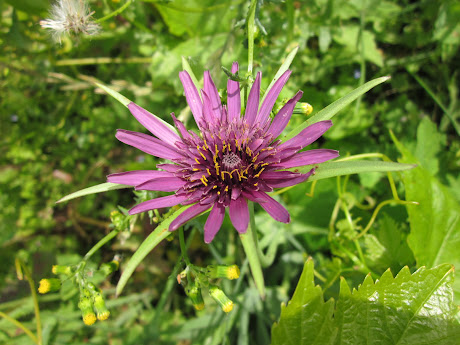
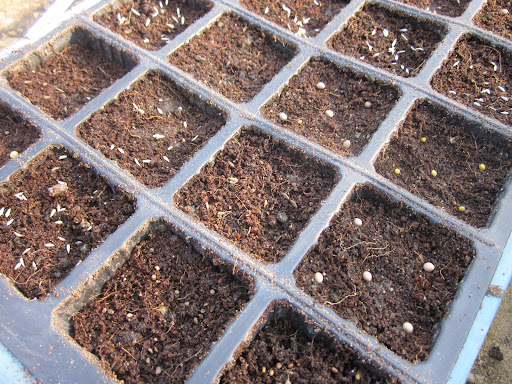
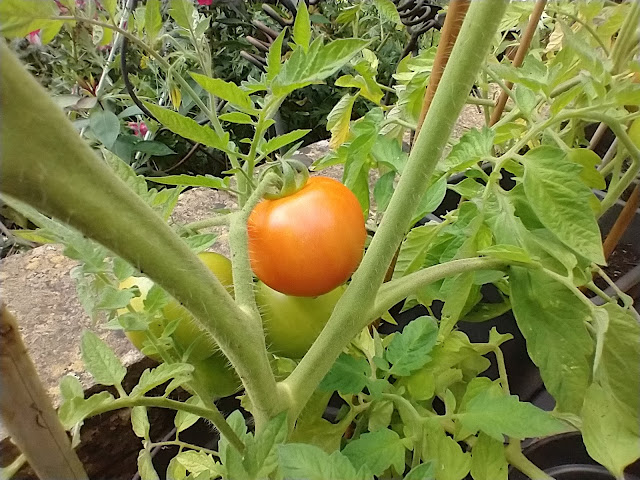


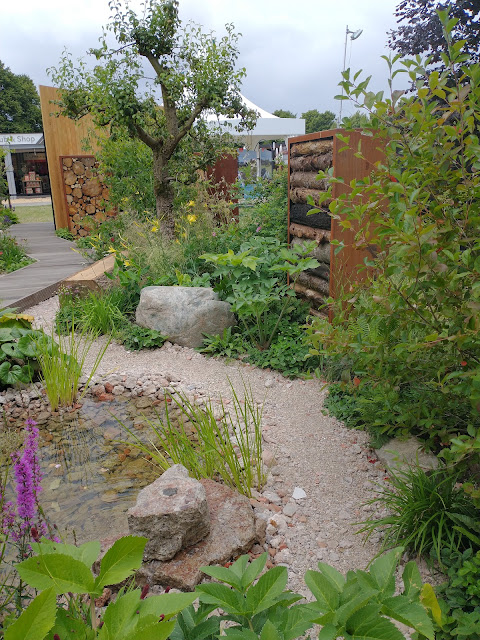




It looks interesting. I don't visit enough gardens out of season which is a pity. I like the group planting of birches - it produces a slightly sinister magic wood effect. I'm still waiting for my lottery win/dream garden so I can have a selection of trees.
ReplyDeleteThe first photo shows a scrumptious planting! I wonder how the birches will look as they mature...It does look like a good place to sit and view the garden. Benches are important and missing in many public gardens! I like that this one invite=s visitors to sit. gail
ReplyDeletemmm--acer red is my favorite autumn color(second is winter sky grey)! hard to find in cloth or fiber, though. what are the small plants in the acer leaves?
ReplyDeletegod bless the National Trust. That was a truly wonderful walk around a great looking garden. Oh it sounds like it is going to get better and better and I don't care if birches are passe, they look amazing!!! Please go back frequently ans let me see it in bulb etc. There's something about a garden that looks great in winter that rises my spirits.
ReplyDeleteWhat a great garden - I'm so impressed they planted Skunk Cabbage, one of my favorite spring wildflowers (wildplants?). I also love the idea of a winter garden. That's a concept that doesn't work to well in the Midwest with all our snow.
ReplyDeleteHaven't been, no excuse, must go!
ReplyDeleteThanks for the low down VP. I am sure that it will take some time to take off but definitely sounds as if it will be worth watching. Will report back in the bleak mid winter :)
ReplyDeleteI like new gardens, almost better than established ones--so full of hope and promise. I think the spot with the most promise is the birch triangle. Even now, it looks so neat and orderly--almost like an abstraction..
ReplyDeleteIt almost looks like you can walk on the duckweed. Kind of scary, actually...
Gosh, VP, I thought the duckweed was lawn! Hope there was signage, don't walk on the water! Having a garden planted specifically for winter interest is such a public service. It is hard to know what will look good, and what companions help that look. The towering Cardiocrinum was inspirational to me, must check it out! Thanks!
ReplyDeleteHow about some more exclamation points!!!!!!!!!!!!!!!!!!!!!!!!!!!!!!!!!!!!!!!!!!!!!!!!!!!!!!!!!!!!!!!!!!!!!!!!!!!!!!!!!!!!!!!!!!!!!!!!!!
Frances
I don't know of any American garden that really promotes its Winter Garden aspects. This is a wonderful view of a new garden.
ReplyDeleteI really enjoyed reading and ought to get off my lazy backside and get across to Dunham Massey to have a look as it's not really that far - even if it is the 'wrong' side of the bumps!
ReplyDeleteI can see that I'm going to be referring back to this post as I plan my new border over winter ......yes, I'm actually planning to plan at last!!!
EG - the birches remind me of the acid rain effects seen on forests in Eastern Europe. However, I still think birch looks beautiful and it plays host to a wide variety of wildlife
ReplyDeleteGail - there were far more benches than marked on the visitor guide :)
Petoskystone - I think they're Euonymus, but was struggling to identify which one - for once there wasn't a label, typical!
Carrie - I'll be doing part II (rest of the garden) soon and it looks like we have a promise of bulb time to look forward to from Anna :)
MMD - funny I was thinking how this kind of thing just wouldn't work in lots of the US and Canada as I wrote this piece.
Elizabethm - yes you must!
Susan - lawn like duckweed was the story of our holiday. We went to a canal museum where the water in the locks was filled to the brim for once and covered with some very tempting greenery. I lost count of the number of times I almost stepped in!
Frances!!!!!!!!!! ;) No warning signage - but at least there was plenty of clues you were close to a canal and not that much opportunity to get up really close to it
Commonweeder - thanks. I must look out some more winter gardens to visit - it would be great to keep up garden visiting during the dullest time of the year wouldn't it?
Nutty Gnome - hurrah! I look forward to seeing what you come up with. The link to the Times article's a good one as it has lots more planting suggestions in addition to the ones I've given you.
I fell in love with an Italian arum, when I saw it at an open garden in Wellington, our nearby town.
ReplyDeleteNice blog. this has been a wonderful tour-thanks for sharing! keep up the good work.
ReplyDeleteElephant's Eye - I had a massive clump in my previous front garden which was north facing. It really welcomed you at the door at this time of the year. Now I have the native plant in my garden, which has appeared by magic, but doesn't have the marbled leaves.
ReplyDeleteFlowers - welcome and thanks!